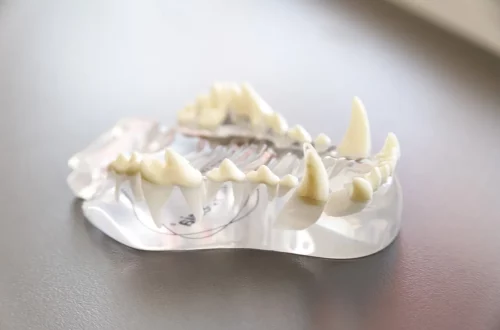
The Benefits and Uses of Blood Clotting Powder in Emergency Care
In emergency care, the primary objective is to stabilize a patient and minimize the risk of further injury or complications. One of the significant challenges faced by first responders and medical personnel is controlling bleeding, particularly in traumatic injuries. Blood loss can lead to shock, organ failure, and even death if not addressed promptly. In such critical situations, every second counts, and the tools and products available for immediate care can make a substantial difference in patient outcomes.
Blood clotting powder has emerged as a vital resource in emergency settings, providing a rapid and efficient means of promoting hemostasis. This powder, often consisting of various hemostatic agents, works by facilitating the natural clotting process, enabling healthcare providers to better manage severe bleeding. Its application is not limited to professional medical settings; it has become increasingly popular among outdoor enthusiasts, military personnel, and even in household first aid kits.
The effectiveness of blood clotting powder lies in its ability to be easily applied and to act quickly, offering a viable solution in situations where traditional methods may be inadequate. As the understanding of trauma care evolves, the integration of such innovative products into emergency protocols continues to grow, underscoring the importance of having effective tools readily available. In this article, we will explore the multifaceted benefits of blood clotting powder in emergency care, examining its uses, advantages, and the essential role it plays in saving lives.
Understanding Blood Clotting Powder and Its Composition
Blood clotting powder is designed to aid in the rapid cessation of bleeding by promoting the natural clotting process within the body. The composition of these powders can vary, but they typically include components such as kaolin, chitosan, or other hemostatic agents. These materials are selected for their ability to facilitate the rapid aggregation of platelets, which are crucial for the formation of blood clots.
Kaolin, for example, is a clay mineral that activates the intrinsic pathway of the coagulation cascade. When applied to a bleeding wound, it provides a surface for platelets to adhere to, accelerating the clotting process. Chitosan, derived from chitin found in shellfish, possesses natural hemostatic properties and has been shown to effectively control bleeding by promoting clot formation.
The application of these powders can be straightforward. After ensuring the area is clean, the powder is applied directly to the wound, and pressure is typically applied to enhance its effectiveness. This method is particularly beneficial in scenarios where traditional bandaging or suturing may not be immediately available or feasible, such as in outdoor emergencies or combat situations.
The ease of use and effectiveness of blood clotting powder make it an essential tool for both professional medical personnel and laypersons. It can be stored easily in first aid kits and is lightweight, making it an ideal choice for those who may find themselves in situations where bleeding control is critical. As awareness of these products grows, so does their integration into emergency response training, providing individuals with the knowledge and skills needed to use them effectively.
Advantages of Using Hemostatic Agents in Emergencies
The use of hemostatic agents, such as blood clotting powder, offers numerous advantages in emergency situations. One of the most significant benefits is the speed at which they can control bleeding. In traumatic situations, every moment counts, and the ability to quickly stop blood loss can be the difference between life and death. Hemostatic powders can act rapidly, often within minutes, allowing for immediate intervention while waiting for advanced medical care.
Another advantage is the versatility of these products. Blood clotting powders can be utilized in various types of injuries, including those resulting from cuts, abrasions, and more severe traumas. This adaptability makes them a valuable addition to any first aid kit, whether for personal use, in workplaces, or in emergency medical services.
Furthermore, the application of blood clotting powder is relatively straightforward, requiring minimal training. This accessibility means that even individuals without extensive medical knowledge can effectively use these products in emergencies, empowering bystanders to take action and potentially save lives.
Moreover, these powders often have a low risk of complications. Unlike some traditional methods of bleeding control that may require more invasive procedures, blood clotting powders can be applied externally with little to no risk of further injury. This non-invasive nature reduces the likelihood of additional trauma to the area, which is particularly crucial in emergency care settings.
Additionally, many hemostatic agents are biocompatible and designed to be absorbed by the body over time, minimizing complications associated with foreign materials. This safe profile further underscores their importance in emergency care, as practitioners can use them with confidence, knowing they are unlikely to cause adverse reactions.
The Role of Blood Clotting Powder in Different Emergency Scenarios
Blood clotting powder proves invaluable across a variety of emergency scenarios, each presenting unique challenges in bleeding control. In outdoor settings, such as hiking, camping, or extreme sports, injuries are often common, and immediate access to professional medical care may be limited. In these instances, having blood clotting powder on hand can significantly enhance a person’s ability to manage bleeding effectively while awaiting further assistance.
In combat situations, military personnel face the constant threat of traumatic injuries. Blood clotting powders have become a crucial part of the first aid kits carried by soldiers. The ability to quickly apply these agents in the field can drastically improve survival rates and outcomes for injured service members, allowing them to stabilize injuries until they can be evacuated to a medical facility.
In urban environments, where accidents and injuries can occur unexpectedly, blood clotting powder offers a practical solution for bystanders who may witness an injury. Whether it’s a workplace accident, a car crash, or an unfortunate fall, having access to blood clotting powder can empower individuals to take immediate action, applying the powder to control bleeding while waiting for emergency services.
Moreover, these powders can be beneficial in home settings, especially for families with children or active individuals. Accidental cuts and injuries are commonplace, and having blood clotting powder readily available can provide peace of mind to parents and caregivers, knowing they have a tool at their disposal to manage bleeding effectively.
In all these scenarios, the integration of blood clotting powder into emergency preparedness plans is essential. By understanding its role and benefits, individuals can be better equipped to handle emergencies confidently and effectively, ultimately leading to improved outcomes for those in need of urgent care.
Best Practices for Application and Use
To maximize the effectiveness of blood clotting powder, it is crucial to follow best practices during application. First and foremost, it is essential to assess the severity of the injury. If the bleeding is severe or does not respond to initial attempts at control, it is vital to seek professional medical assistance immediately.
When applying blood clotting powder, begin by ensuring that the area around the wound is as clean as possible. If feasible, gently rinse the wound with clean water to remove any debris. After cleaning, dry the area to ensure that the powder adheres effectively.
Once the wound is prepared, apply the blood clotting powder liberally over the bleeding site. The powder should cover the entire wound and surrounding area to maximize its hemostatic effects. After application, apply firm pressure directly on the wound for several minutes. This pressure is crucial, as it helps to promote clotting and allows the powder to work effectively.
Monitoring the injury is also essential. Keep an eye on the bleeding and the overall condition of the injured person. If bleeding continues or worsens, do not hesitate to seek further medical help. In some cases, additional measures such as elevation of the injured area may also be beneficial.
Finally, it is important to remember that while blood clotting powder can significantly enhance bleeding control, it should not replace professional medical care. Once the immediate situation is stabilized, individuals should still seek further evaluation and treatment from healthcare professionals to address any underlying issues or complications.
In conclusion, blood clotting powder represents a crucial advancement in emergency care, providing an effective and rapid means of controlling bleeding in various settings. As awareness and understanding of its benefits continue to grow, so too does its role in improving patient outcomes in emergencies.
**Disclaimer:** This article is not intended to provide medical advice. For any health concerns or emergencies, please consult a qualified healthcare professional.




